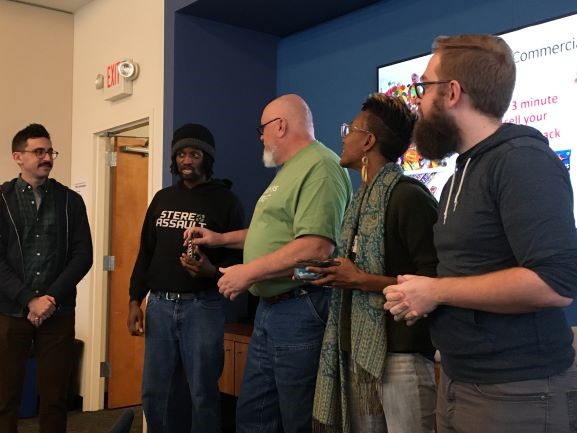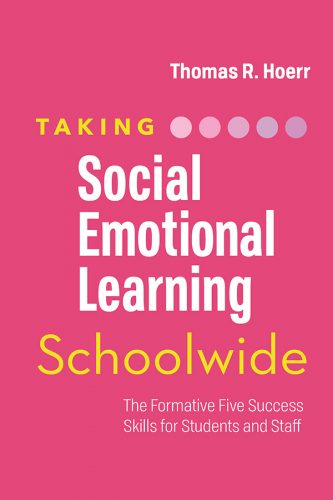Multiple Intelligences Newsletter, Vol 29, No 4
January 29, 2020
Greetings MI Fans,

Are you ready for spring? Soon, schools in the northern hemisphere will have to confront the February Doldrums. Winter break was ages ago, spring break is too far away to contemplate, the weather is cold, and the skies are gray. Is it any wonder that students – and staff members – get a bit restless? Well, one strategy to de-doldrum (sorry!) is to ensure that people of all ages are learning through multiple intelligences. Yes, MI is a powerful tool in all 365 days, but it may be even more powerful when motivation sags.
We know how MI supports learning. Of course students will be motivated and learn more when they can use their intelligence strengths. But MI also supports adult learning too. I suggest that school leaders, regardless of their role or title, make a point of using MI in committee and faculty meetings. What if the charge of the group was presented musically or through a poem? How might the spatial intelligence – drawings or diagrams – be used to explain and plan? Can a dance or rhythm creation convey a message? Chances are that one or more of these MI approaches would be fun, liven learning, and engage everyone. We need to remember that adults are just older kids; we all learn the same. In every setting, learning comes best when the learner is motivated, successful, and personal needs are addressed (comfortable seating, movement, calories, and so on). Here’s another argument for this: What If Faculty Meetings Were Voluntary? Voluntary?!?
This issue of Intelligence Connections features an article by Carolyn DeVito, a preschool director in NJ. Her experience shows us that MI works.
I’d be delighted to hear from you. How are you using MI? What questions do you have?
TOM
Thomas R. Hoerr, PhD
ASCD MI Professional Interest Community Facilitator
MI In Pre-K
by Carolyn DeVito
As the Assistant Executive Director of the Montclair Community Pre-K (MCPK) in Montclair NJ, I have had the privilege of serving over 220 children and their families every year since the school opened in 1998. The children and families in our school mirror the diversity of the township in every way including race, religion, ethnicity, family structure, and social-economic level. We have a unique partnership as a public/private non-profit entity with financial support coming from several sources – tuition, the Township of Montclair municipal budget and our own fundraising efforts. Our tuition is on a sliding fee scale so that every family regardless of their income is afforded the opportunity to send their child to a NAEYC accredited preschool. The children range in age from three years to five years and when they finish our program the majority will attend the public school kindergarten in town.
The reason I have chosen to spend my entire 40 year career in the field of Early Childhood Education is to work with children and their families. In 1998, I was privileged enough to become one of the founding faculty members of the MCPK. The children enrolled in our school truly do matter to the teachers and administrators and meeting their social, emotional, intellectual, and physical needs are at the forefront every day. Our use of MI enables us to do that in so many ways whether it is in the way we plan the physical environment or the way we plan curriculum. The environment in a high quality early childhood classroom is already designed in a way that meets the multiple intelligences which includes a dramatic play center to enhance social–emotional and language skills, a block area for mathematical/logical development, an art area for visual-spatial skills or a quiet space for children to be alone and think or unwind (and several other areas!). We have also chosen to design the framework of our curriculum using Dr. Howard Gardner’s Theory of Multiple Intelligences.
To do this, our lesson plans are written as a web. The center of the web is the topic we are exploring (based off of our observations of the children’s interests) and each box of the web contains one of the intelligences. Over the years we have explored topics such as bridges and tunnels, trains, nocturnal animals, outer space, and one of the children’s favorites, dinosaurs. Having the use of a web with MI set out in this way encourages us to ensure that we are enabling children to learn through all of their intelligences. It also gives us the opportunity to use a child’s strengths to help develop those which may not be quite as strong and to encourage the children to help each other develop their skills. A child who is strong linguistically but struggles in social interactions can be encouraged to work with a child who works well with others but has limited linguistic skills.
During my time in this field, I always feel like I am meeting the needs of each child in an effective and meaningful way. I can see from my own planning experiences using this web and the lesson plans that my teachers submit to me that more thought is given as to how individual children learn and grow. And when you are meeting the needs and learning “styles” of each child, there is the added benefit of a child developing a stronger self- image. He/she begins to understand how they learn best and can utilize that knowledge as they continue to learn. As they move through their school “career,” hopefully they will have a teacher who recognizes (and supports) it as well.
To continue the dialogue, contact Carolyn at carolyn.devito@montclairprek.org.
Art in the Community

Earlier this month I was fortunate to spend a day working with the artists and community leaders in St. Louis’ Community Arts Training (CAT) Institute. Sponsored by the RAC (Regional Arts Commission), CAT is an innovative program centered on the belief that art has the power to be an agent for positive social change. Founded in 1997, “CAT is a five-month training that fosters successful partnerships between artists of all disciplines, social workers, educators, community and social activists, and policy-makers with the goal of creating relevant, impactful arts programs particularly in under-resourced community settings, e.g. neighborhood organizations, social service agencies, development initiatives, and after-school programs.”
My role on that Saturday was to introduce the CAT fellows to MI. The artists in attendance engage in one or more intelligences, mostly musical, spatial or wood-working; it’s who they are! But the community leaders can benefit from MI, too. We talked about how MI can facilitate communication, how it can be used to engage neighbors, and how MI can be a tool for all of us to help take care of ourselves. Here’s a photo of a group using MI to make a case for the kind of snacks we should buy! (This is a fun way to get folks into the spirit of MI. They have five minutes to plan a commercial for their snack, using several MI.) If we’re not routinely using our stronger intelligences at work and/or at play, it will take a toll on us. It was a terrific day and I was able to meet many talented folks.
Coming to the ASCD Annual?
If you are going to be at the ASCD Annual Conference in L.A. in March, please join me for my session, The Formative Five: Building Both Moral and Performance SEL in School Culture. These success skills were set out in my 2017 book, The Formative Five: Fostering Grit, Empathy and Other Success Skills Students Need. More recently, my new book, Taking Social Emotional Learning Schoolwide: The Formative Five Success Skills for Students and Staff, shows how school culture can be used to teach SEL. The session will be held on Saturday, March 14, 3:30-4:30 (#3501). The Interpersonal and Intrapersonal intelligences framed my thinking about these success skills. Here’s a blurb on my presentation: FF at ASCD Conf. I hope to see you there!
ASCD
This Professional Interest Community is sponsored by ASCD as part of their effort to improve the quality of education for all children. ASCD PICs are member-initiated groups designed to unite people around a common area of interest in the field of education. PICs allow participants to exchange ideas, share information, identify and solve problems, grow professionally, and establish collegial relationships.
You can learn about ASCD’s networks, publications, conferences, workshops, and the dialogues sponsored by ASCD at http://www.ascd.org. You can also register for the free ASCD SmartBrief.
Questions or comments? I’d like to hear from you! Please send me an email at trhoerr@newcityschool.org or contact me here.

